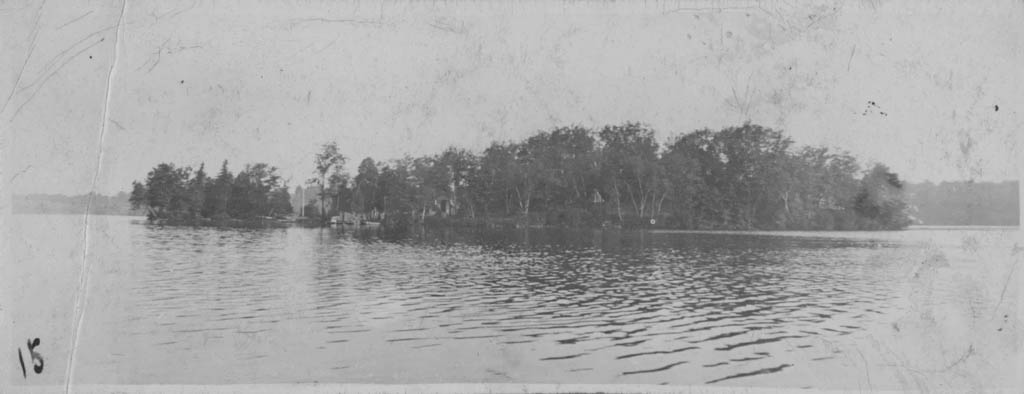An island on Indian Lake, just north of Chaffey’s Lock in the Township of Rideau Lakes, (part of the Rideau Waterway) became a hospital for returning soldiers from WWI. These soldiers had PTSD, which was known as shell shock at the time. The hospital, known as Fettercairn, was founded in Agnes Etherington’s family cottage (nee Richardson).
Agnes Richardson’s family was well-known in financial circles and was recognized as one of Canada’s wealthiest families. The patriarch James Richardson, who immigrated to Canada from Northern Ireland in the 1820s, was the source of their vast fortune (rumoured to be worth more than $5 billion). The family purchased Fettercairn Island in 1901. Agnes’ brother George went to Queens University in Kingston and was a great athlete, playing hockey and football there. After graduating from Queen’s, he joined the 14th Regiment, where he played hockey on a team that reached the OHA finals three years in a row. Richardson left the regiment to pursue business opportunities with the family firm, but when war broke out in 1914, he quickly rejoined. He died during an operation in Wulverghem, West Flanders, at the age of 29.
Agnes Richardson used money left to her by her brother to open their existing home on Fettercarin Island as a convalescent home for returning World War I soldiers. Beginning in May 1916, 45 rooms in the house served 50-80 soldiers. They loved living along the lakeshore, where they could fish, boat, and even play golf on a small course that had been built.
“Fettercairn Island is situated on Indian lake, one of the Rideau chain near Chaffey’s locks – a wonderful place of wild beauty with Laurentian aspects. It is one and a half acres in size, and its buildings consist of the main house hidden amongst the trees, which contains a recreation hall, and sitting-room with large open fireplaces, two small cottages, storehouses, and a large boathouse above which is the dining-room overlooking the lake. A tiny island is linked to the larger one by a rustic bridge – this is where the campfires are held, while the mainland close by provides for woodland hikes.”
The Ottawa Citizen, May 21, 1932
When the war ended, the convalescent home was closed. Agnes Richardson later married Dr. Frederick Etherington of Kingston. In 1929, the couple gave the property to Canadian Guiding. On July 1, 1929, the first summer training camp for Guiders opened its doors. Every year, training camps on a variety of topics were held, as well as holiday weeks where Guiders could meet and spend time with other Guiders from all over the country. With the growth of the organization it became less and less practical to offer guilder’s training in only one location, and the property was returned to Agnes and her husband in 1941. Unfortunately, all that remains of the house today are the building foundations and a portion of a chimney. It is unknown who owns the island today; it may be descendants of the Richardson family.
Rideau Waterway
The Rideau Waterway connects Ottawa, Ontario, Canada’s capital city, to Lake Ontario and the St. Lawrence River at Kingston. It stretches for 202 kilometres. (125 miles) The name Rideau comes from the curtain-like appearance of the Rideau River’s twin waterfalls where they meet the Ottawa River. Sections of two rivers, the Rideau and the Cataraqui, as well as several lakes, are used in the canal system. The Rideau Canal is managed by Parks Canada. Boating is very popular on the Rideau waterways, and you can travel by water from Ottawa to Kingston. You cruise by Fettercarin Island on this exhibition.
The Rideau Canal waterway is North America’s oldest continuously operating canal system. The locks are open from May to October each year, and the majority of them are still operated by hand. The canal has 45 locks at 23 stations and was designated a UNESCO World Heritage Site in 2007.





